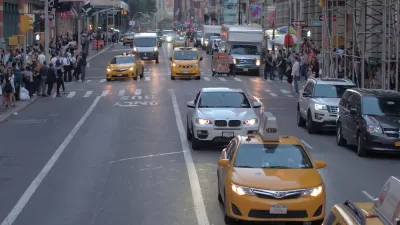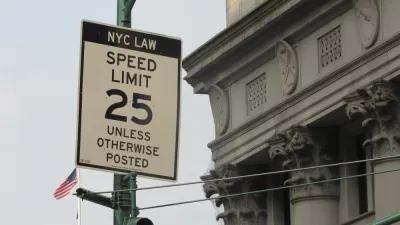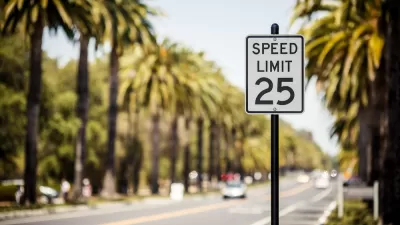City vehicles equipped with speed limiting technology showed nearly complete compliance with speed limit laws and a significant reduction in hard-braking events.

An intelligent speed assistance (ISA) pilot program launched by New York City on 50 city vehicles last August proved successful in improving compliance with speed limit laws, reports Danielle McLean for Smart Cities Dive.
According to the article, “During that time, hard-braking events were reduced by 36% and vehicles complied with local speed limits 99% of the time, with the 1% representing the time between the initial acceleration and the time it takes for the ISA to reduce the speed.”
The city’s Safe Fleet Transition Plan for city fleet vehicles, updated in 2018, “formalized a set of best-practice vehicle safety technologies for all City vehicles to prevent and mitigate crashes, in direct support of Vision Zero,” according to the plan’s introduction.
The city’s Department of Citywide Administrative Services (DCAS) will assess the full results after the program ends next year and “has also requested federal grant funding to broaden the rollout of ISA technology for about 7,500 fleet vehicles over three or four years.”
Last year, the National Transportation Safety Board (NTSB) recommended that the federal government require speed limiting technology on new cars, a suggestion that earned critical fear mongering from some pundits who viewed it as an invasion of privacy (more on that here).
FULL STORY: NYC says vehicles equipped with speed limit tech reduced unsafe driving

Manufactured Crisis: Losing the Nation’s Largest Source of Unsubsidized Affordable Housing
Manufactured housing communities have long been an affordable housing option for millions of people living in the U.S., but that affordability is disappearing rapidly. How did we get here?

Americans May Be Stuck — But Why?
Americans are moving a lot less than they once did, and that is a problem. While Yoni Applebaum, in his highly-publicized article Stuck, gets the reasons badly wrong, it's still important to ask: why are we moving so much less than before?

Using Old Oil and Gas Wells for Green Energy Storage
Penn State researchers have found that repurposing abandoned oil and gas wells for geothermal-assisted compressed-air energy storage can boost efficiency, reduce environmental risks, and support clean energy and job transitions.

Updating LA’s Tree Rules Could Bring More Shade to Underserved Neighborhoods
A new USC study finds that relaxing Los Angeles’ outdated tree planting guidelines could significantly expand urban tree canopy and reduce shade disparities in lower-income neighborhoods, though infrastructure investments are also needed.

California's Canal Solar Projects Aim to Conserve Resources and Expand Clean Energy
California’s Project Nexus has begun generating electricity from solar panels installed over irrigation canals, with researchers and state agencies exploring statewide expansion to conserve water and boost clean energy production.

HHS Staff Cuts Gut Energy Assistance Program
The full staff of a federal program that distributes heating and cooling assistance for low-income families was laid off, jeopardizing the program’s operations.
Urban Design for Planners 1: Software Tools
This six-course series explores essential urban design concepts using open source software and equips planners with the tools they need to participate fully in the urban design process.
Planning for Universal Design
Learn the tools for implementing Universal Design in planning regulations.
Heyer Gruel & Associates PA
City of Moreno Valley
Institute for Housing and Urban Development Studies (IHS)
City of Grandview
Harvard GSD Executive Education
Salt Lake City
NYU Wagner Graduate School of Public Service
City of Cambridge, Maryland





























